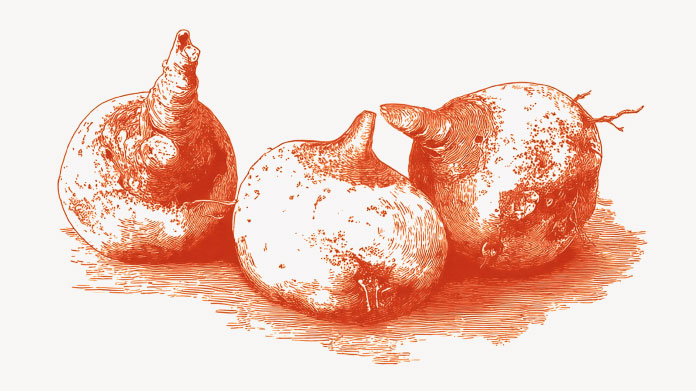Food-combining diet: principles, benefits and practical advice
Many people are attracted to the idea of food-combining. Based on avoiding certain food combinations, it may produce rapid and sustainable weight loss. Here we evaluate this diet and provide tips on how to follow it safely.

Food-combining diet: history and key principles
The principles of this diet are to be found in Ayurveda, the traditional Indian system of medicine. It was first taken up in the United States at the beginning of the 20th century. Dr William Howard Hay formalised the diet’s main rules, and Dr Herbert Shelton subsequently offered a more detailed insight in his 1951 book ‘Food Combining Made Easy’ (1).
The food-combining diet is based on two key principles:
- different foods are not all absorbed by the body at the same rate: combining certain foods may complicate the digestive process;
- foods are digested with the help of gastric enzymes: in order to function optimally, they need an environment with a specific pH. Combining foods which have different effects on acidity makes it harder for the body to absorb them.
Benefits of the food-combining approach
Adopting the food-combining diet may thus enhance the digestive process, and limit any unpleasant effects thereof. This may also reduce harmful putrefaction of foods in the stomach. In addition, by reducing the amount of effort expended on digesting food, the body may be able to devote more time to other natural functions.
Proponents of the diet believe it also facilitates rapid weight loss, producing a noticeable feeling of lightness and a significant increase in energy (2).
By excluding bad food combinations, the diet may prevent the release of potential disease-causingtoxins in the body. According to this theory, a number of health problems could be avoided by following the principles set out by Drs Hay and Shelton.
Food-combining in practice
How do you apply this diet on a daily basis? A number of basic principles need to be observed:
- Do not combine carbohydrates with animal protein in the same meal. Digesting protein makes it much harder to digest starch. For the Western consumer, this means giving up some well-established dietary practices. No more pasta shells with ham, or sausage and mash!
- Only eat fruit on an empty stomach, and above all, do not eat it at the end of a meal. The simple sugars in fruit are digested less efficiently when the body has already devoted its resources towards digesting other elements such as protein.
- Do not consume starches with foods that increase acidity, such as dairy foods, condiments, spinach, citrus fruit … Saliva plays a key role in the digestion of complex carbohydrates such as pasta, rice and potatoes, and this digestion works at its best in a pH neutral environment.
- Dairy products should only be consumed by themselves, or possibly with fruit and vegetables. This means not eating bread and cheese together.
- Take the time to digest properly between each meal. Leave at least four hours after a meal containing protein, and at least seven hours after a high-fat meal.
These principles can be applied on a daily basis by, for example, choosing one type of food for each meal. Some people even prefer to concentrate on one food type for each day of the week.
Potential options for food-combining over a day
- breakfast: fruit;
- lunch: grains (starches, pulses) ;
- dinner: meat or fish, with some vegetables.
In what circumstances might it be a good idea to adopt the food-combining diet?
There are several situations conducive to following the food-combining diet for a short period.
Extreme fatigue
This diet can provide an energy boost by enabling less energy to be expended on the digestive process.
If you think your low energy levels might be due to a nutritional deficiency, you could also take a multivitamin supplement, such as Daily 1. This vitamin, mineral and antioxidant complex comes in the form of sustained-release capsules: taking just one capsule daily allows you to benefit from its effects throughout the day.
Engaging in sport
Often mentioned is the Nordic food-combining diet.This consists of significantly reducing your intake of carbohydrates and increasing that of fat and protein several days before an endurance event, and then completely reversing this three days before the event. This approach is thought to optimise the body’s levels of glycogen, a stored form of glucose that’s directly-usable as energy during exercise (3).
Our sports-loving customers may also be interested in the benefits of Cordyceps Cs-4, D-ribose and Rhodiola rosea. Rich in natural active ingredients, these supplements are ideal for anyone engaging in physical activity.
For ‘detoxing’
Some people extol the ‘detox’ virtues of this way of eating. Food-combining may indeed reduce the food-fermenting process which has an adverse effect on the gut mucosa and microbiota.
The food-combination diet can happily be combined with supplementation in order to benefit from all the potential detoxifying effects of glucosinolates.
Precautions to take with this type of diet
The food-combination diet is tempting as it is relatively easy to follow provided you manage to compartmentalise your meals and days. The prospect of rapid weight loss is also appealing.
However, it needs to approached with good sense and perspective. This is a diet that should only be adopted short-term. It is not well-balanced enough to be suitable to follow for more than a week. The fact that it’s rigid and exclusionary also makes it difficult socially, whether you’re having a meal with friends, lunch in the canteen or eating out. Last but not least, there is insufficient scientific evidence to prove its credibility beyond doubt.
In conclusion, if you decide to try this kind of diet, make sure you pay attention to what your body is telling you. It’s important to eat a varied diet and always listen to your body. In addition, our supplements are there to help you maintain everyday nutritional balance!
References
- Shelton, Herbert M. Les combinaisons alimentaires et votre santé. La nouvelle hygiène, 1951.
- Golay, A & Allaz, Anne & Ybarra, Juan & Bianchi, P & Saraiva, S & Mensi, N & Gomis, Ramon & Tonnac, N. (2000). Similar weight loss with low-energy food combining or balanced diets. International journal of obesity and related metabolic disorders : journal of the International Association for the Study of Obesity. 492-6. 10.1038/sj.ijo.0801185.
- De Mondenard, J.-P. Mise à jour sur l'alimentation du sportif. Culture technique, 1985.
Keywords
4 Hours
Good delivery and flawless quality
AS far as delivery and the visual quality are concerned, Supersmart is excellent. I will not comment on the efficacy of the products themselves, since that is only possible over a longer period and in a large customer base compared to people who do not consume a particular product.
Roger De Backer
1 Days
Perfect services
Perfect services, perfect support, great articles about products
Michaela Alali Beitlová
1 Days
Great experience and effective supplements
I’ve purchased many types of supplements from this company over the course of years to treat a few issues, and I’m satisfied with their quality. After using them consistently for a period of time, I can say they met my expectations and I could feel real health benefits that built up over time. Deliveries are always quick. I recommend this company to anyone looking for high-quality supplements.
Giordano
2 Days
Es hat alles gestimmt
Es hat alles gestimmt. Top
marina thieme
5 Days
Great product
Great product, but still evaluating its effectiveness. Highly recommended. Super efficient delivery.
Chalise
9 Days
Quality products
Quality products , efficient and effective customer service. You can’t ask more
CLaudia
15 Days
Good quality product and customer service.
So far, I'm liking this product, and the customer service was very good.
ELZL
21 Days
The products I use are excel·lent
The products I use are excel·lent
ROSAS Josep Maria
30 Days
Delivery is prompt and I never saw a…
Delivery is prompt and I never saw a quality problem with the manufacturing. It is not possible to assess efficacy on a personal basis, since too many factors come into play. Efficacy can only be assessed statistically with a sufficient number of cases.
Roger De Backer
30 Days
I collaborates with the Supersmart…
I collaborates with the Supersmart more than 10 years. Every thing is going good. Quality of the things is good. Delivery comes in time. Five stars definitely !!!
Oleksiy
31 Days
All good
Simple, frictionless site, easy ordering, good delivery updates and execution.
Chris Robbins
33 Days
I feel better
I feel better
Peter Ammann
33 Days
Prompt delivery
Prompt delivery
JAKUB Radisch
34 Days
My new go-to for top quality supplements!
I am buying more and more of my supplements from this superb, high quality company. Cannot recommend it enough. Plus, excellent customer service with a quick, helpful team and speedy deliveries. Highly recommend Supersmart!
Cecilie H.
38 Days
SUPERSMART WHAT ELSE👍
SUPERSMART WHAT ELSE👍
DIEDERLE Christophe
of experience
your money back
##montant## purchase



